When Bill Keener began working as a field biologist at the Marine Mammal Center in the 1970s, there were no whales or dolphins in San Francisco Bay. The waters east of the Golden Gate Bridge were teeming with life—sea lions and seals galore—but not a single cetacean in sight.
Things started to change from the late 2000s onwards.
Four species of cetaceans now live in or regularly visit the busy waters east of the Golden Gate: harbor porpoises, gray whales, humpback whales, and bottlenose dolphins.
Still, Keener and other marine researchers aren’t sure whether the animals’ presence is a sign of ecosystem health and rejuvenation or a portent of planetary disaster. And in each case, the story is a little different.
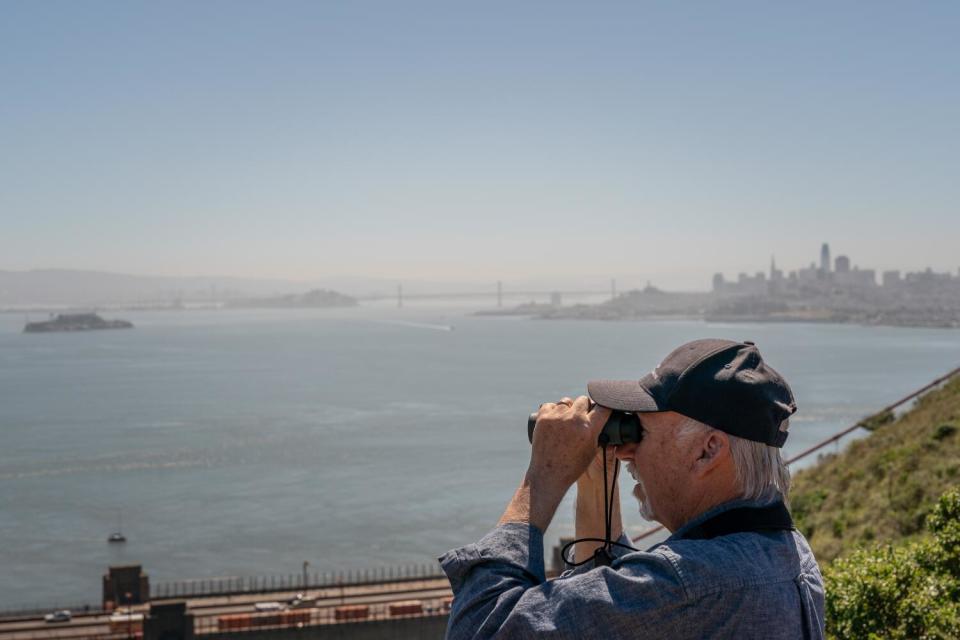
Whatever the reason for their return, they are increasingly concerned that as the numbers of this charismatic megafauna increase, so too does the risk of injury and death in these busy waters.
“We have one of the busiest ports on the West Coast, 85 private and recreational marinas, high-speed ferries and a lot of shipping traffic,” said Kathi George, director of the cetacean conservation biology division at the Marine Mammal Center. “These animals are showing up in places where it’s a cause for celebration, but also a cause for concern.”
Porpoises
Take the porpoise for example.
Keener said these gentle, blunt, dolphin-like creatures had been a fixture of the bay for thousands of years. Until they weren’t.


Evidence from the Ohlone shell mounds—large piles of discarded bones and shells found throughout the Bay Area—suggests that they were once abundant, but died off or fled en masse in the 1940s as the U.S. stepped up its defenses during World War II. Fearing enemy submarines, the Navy stretched a large steel net across the bay to prevent submarines from sneaking in.
Whether due to the physical presence of the net, or the crashing and noise it made underwater (probably very loud, according to Keener), the porpoises disappeared for more than 60 years.
What brought them back is not entirely clear. It may have been partly due to the effectiveness of the gillnet ban in the 1980s, which allowed the porpoise population to grow. They may also have followed food sources. And once the porpoises came in, they recognized it as a good place to settle.
Whatever brought them, they stayed. You often see them splashing and diving along the edge of Kirby Cove or around the peninsula of Point Diablo Lighthouse.
Humpback whales
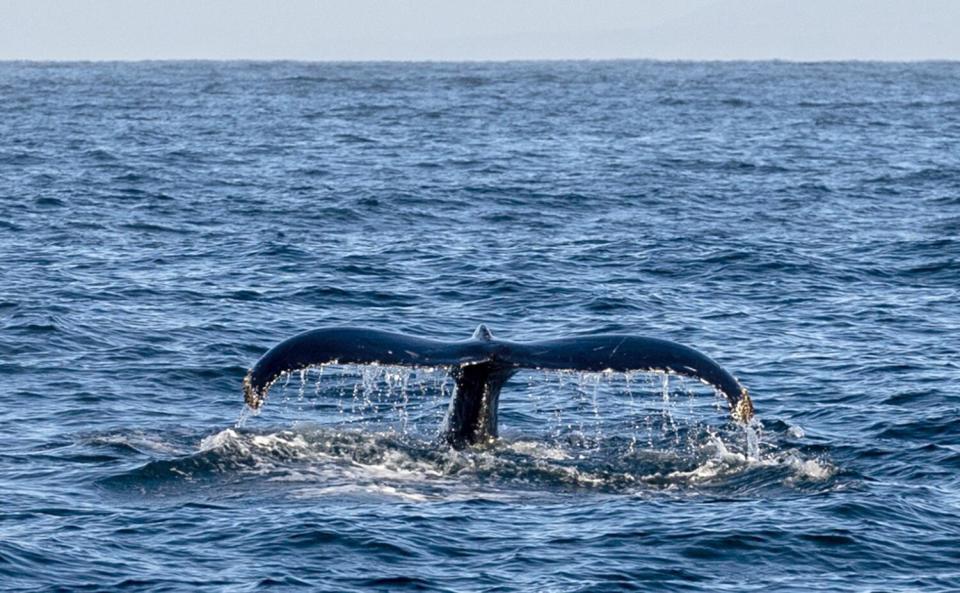

The humpbacks might also be a good news story — although unlike harbor porpoises, they have probably never been permanent residents of San Francisco Bay. There is no evidence of them in the shell mounds and no historical records of them in the bay.
But they have always been present off the coast — migrating from their wintering grounds in Mexico and Central America to California in the summer, where they feed on fish and krill along the coast. But as a result of whaling, their numbers had declined to about 2,000 by the early 1970s.
However, since then their population has grown to 20,000.
“That’s what happens when you stop hunting them,” Keener said.
And in 2016, for the first time in anyone’s memory, an influx of humpback whales came to the bay, following a dense school of anchovies. They’ve been summer regulars ever since.
Gray whales
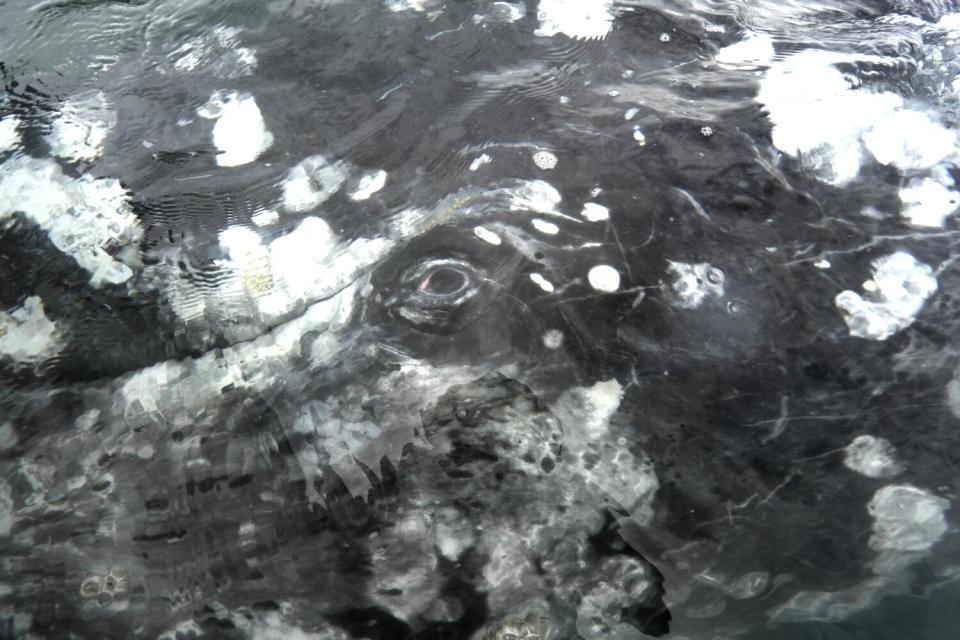

The story of the gray whales is perhaps a little more somber.
As with the humpbacks, there are no historical records of the presence of these singing whales in San Francisco Bay, other than one skeleton discovered in a 2,500-year-old shell mound and one historical account by Spanish missionaries of gray whale fountains in the bay.
But in 1999 they began to appear, just as an unusual die-off was underway that, by the end of 2002, had nearly halved the gray whale population in the eastern Pacific.
After the mass strandings subsided and the population began to grow again, they were not seen again — except for one or two per year — until 2019, when another mass die-off occurred.
This time, however, the whales seem to be staying. This year, 16 have been spotted in the bay, including one that died.
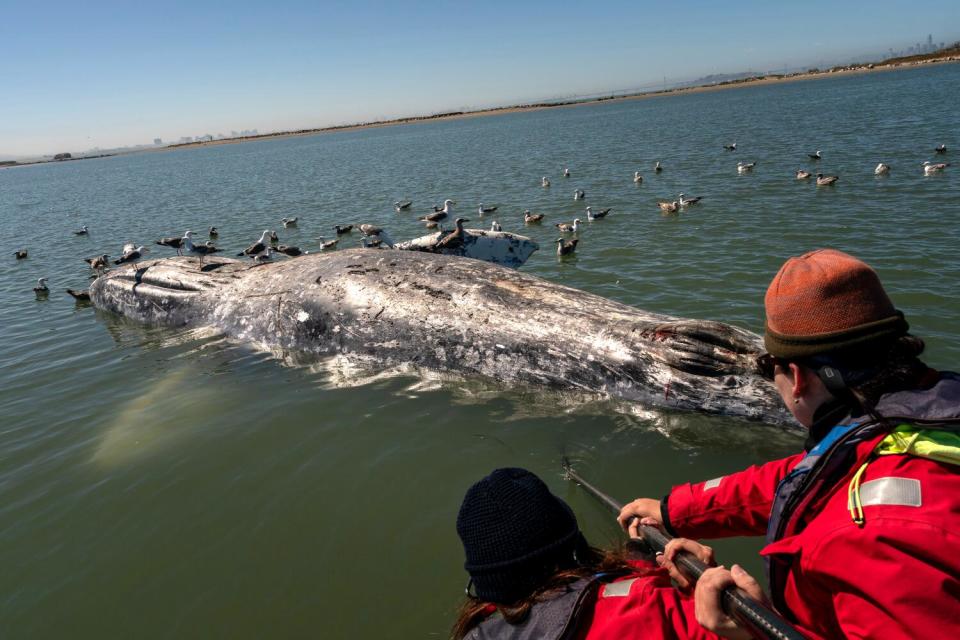

But this time, they do something that Keener and others find rather unusual: they eat.
Gray whales normally only feed in Arctic and subarctic waters during the summer months, when the cold seabed is teeming with life and millions, if not billions, of tiny shrimp-like creatures that the whales scoop up in their massive jaws. The whales feast all summer long and only then begin the 6,000-mile journey south to Mexico, where females calve and nurse their young in the warm, protected inlets along the Baja Peninsula.
Once they leave the Arctic, they do not eat again until the following year.
But researchers and observers have seen them diving and searching for food in San Francisco Bay, and also see them “lunge-feeding,” a feeding habit typical of humpbacks in which they open their mouths and lunge to the water’s surface to grab fish and other organisms.
And while that could be a worrying sign – that their usual feeding grounds are no longer productive, possibly due to the extreme climate changes taking place in the Arctic and the ocean – Keener prefers to see it in a more positive light.
The feeding behavior is “an indication that these guys were probably hungry and looking for other food sources,” he said, citing his colleagues’ necropsy studies of beached whales that found many were malnourished. “But it also shows that they’re resilient and that they can change their behavior and do something that they’re not known for. That’s actually a good sign.”
Read more: How Humanity’s Deafening Noise Is Deafening Whales and Other Marine Life
Keener noted that the animals had survived previous dramatic swings in climate, such as the Ice Age. And that flexibility is likely what “kept them going as they dealt with ice ages, all sorts of changes in the environment of their feeding grounds over the last several thousand years.”
He said it bodes well for the species as climate change continues to shake up major ecosystems across the planet.
And, he said, their work shows that these aren’t just random whales stopping off during their migration. Some individuals return again and again, leading him and his colleagues to think that “some of them are learning our local environment, figuring out how to navigate and find food. You know, just living in our environment.”
Read more: This LA Marine Mammal Sanctuary Is At Capacity. Here’s How You Can Help
Tumblers
The bottlenose dolphins that now visit regularly can also be a bright spot.
They are generally considered a warm-water species that is more common in Southern California. They began appearing in San Francisco Bay around 2008, much like harbor porpoises. Their range began to move northward in the 1980s (initially following an intense El Niño event), and by 2000 they were seen with relative frequency in coastal waters near the bay.
There are no resident groups in the bay, Keener said, but “they do come visit.”
Keener said the Marine Mammal Center has compiled a local photo-identification catalog of 120 adults. Some of them have been identified as dolphins that lived in SoCal in the 1980s. He said the dolphins are migratory — with a known female swimming through Monterey waters in the spring and hanging out at Sea Ranch in Sonoma County last week.
“She goes everywhere, and that’s normal,” Keener said.
The big picture in a busy bay
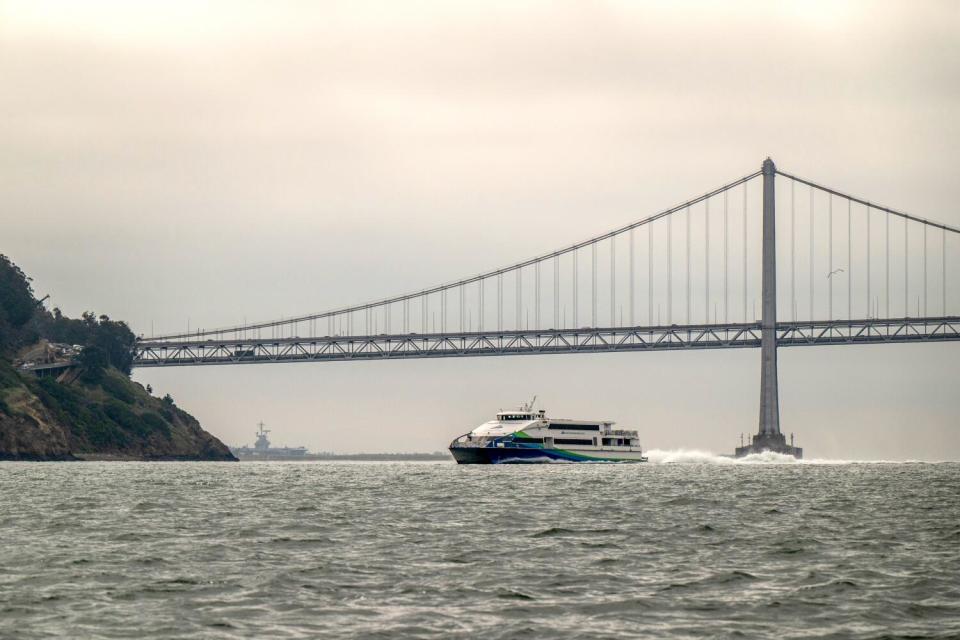

And while this observer of a rapidly changing ocean and the atypical behavior of its inhabitants remains hopeful on a grand, existential level, he and others worry about the more immediate safety of these charming marine creatures in the busy shipping lanes of San Francisco Bay.
None of these animals are on the endangered species list, he said, but that doesn’t stop him and his colleagues from worrying, “especially when they come into the bay, where it’s dangerous for them. There’s just so much shipping traffic.”
George, of the Marine Mammal Center, said there are large stretches of water in the Bay Area where there are no voluntary boating areas. This tactic is used elsewhere by conservationists, ports and shipping companies to reduce the chance of ships striking whales.
However, George said she and other conservationists are working with the Harbor Safety Committee on the matter, which she said is receptive and working to formalize plans to protect the animals.
“I am so excited about the collaborations that are happening and continuing to evolve,” she said.
This story originally appeared in the Los Angeles Times.